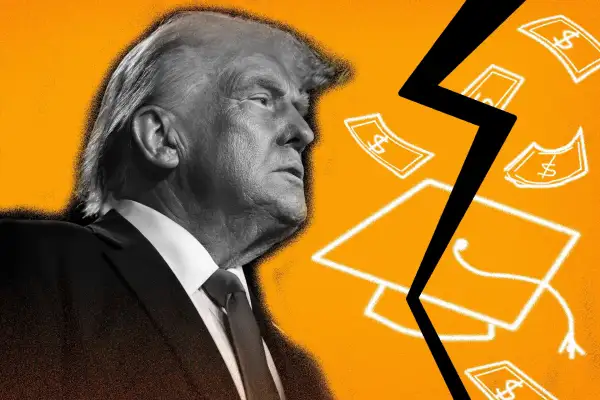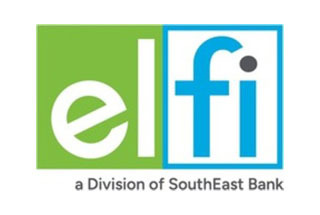What Happens to Student Loans if Trump Shuts Down the Education Department?

President Donald Trump campaigned on the idea of dismantling the U.S. Department of Education. On Tuesday, his administration made its latest move to act on that pledge.
The Education Department provides roughly 10% of K-12 funding and enforces federal civil rights for students. (It does not establish federal curriculum for schools.) It plays a much larger role in financing higher education, including the maintenance of a massive $1.6 trillion student loan portfolio and numerous funding programs for colleges and students.
"The Trump Administration is taking bold action to break up the federal education bureaucracy and return education to the states,” Education Secretary Linda McMahon said Tuesday, announcing agreements with four other federal departments to administer programs and services previously provided by the Education Department.
The Department of Labor is taking on several programs aimed at supporting academic and literacy development for younger students, especially disadvantaged and homeless children. The departments of State, Interior and Health & Human Services will also oversee new education-related programs under the agreements.
The announcement has drawn ire from some nonprofit education groups. The National Association of Federal Student Aid Administrators, or NASFAA, said the plan "raises significant concerns" related to logistics, efficiency and expertise.
"Transferring these responsibilities to agencies without deep experience in higher education programs or policy risks creating new obstacles for students," said NASFAA President Melanie Storey in a statement.
For now, the changes do not affect the Education Department's student loan portfolio or financial aid programs like Pell Grants. With over 40 million federal student loan borrowers, the Education Department is one of the largest holders of consumer debt in the country.
Under McMahon's leadership, the Education Department's mission has shifted to the "elimination of bureaucratic bloat," she said in a memo circulated shortly after she was sworn in as secretary in March. McMahon said her plans will "profoundly impact staff, budgets, and agency operations."
Can Trump really shut down the Education Department?
Experts warn that disbanding the department would have unforeseen rippling effects not just on K-12 and higher education but the economy in general — if it were to happen.
According to Michael Itzkowitz, president of the education consulting firm HEA Group, the complete elimination of the Education Department is "extremely unlikely." He says Trump can’t dissolve the department on his own. Congress must pass a law to do so — and that would need support from Democratic Senators to reach the 60-vote threshold to overcome the filibuster.
At the same time, "we're now seeing a de facto dismantling through executive action," adds Itzkowitz, a former Obama-appointed Education Department official. "The administration appears to have concluded that if you can't eliminate the Department, you can hollow it out from within by redistributing functions, cutting staff and starving programs of resources."
As for a complete abolishment, it has technically been done before. The current iteration of the Education Department was created by former President Jimmy Carter, opening in 1980. But that wasn’t the first Education Department.
More than a century prior, President Andrew Johnson’s administration created an Education Department during the Reconstruction Era in 1867. By 1869, the agency was all but shuttered. Congress shrunk its funding and the department merged with the Department of Interior, becoming the Bureau of Education.
The argument then was much the same as it is today: Opponents of the department say it is wasteful and ineffective, and that states should solely manage their own education programs.
Project 2025, a conservative policy wish list from lobbyists in Trump's orbit, makes that argument almost verbatim.
“Federal education policy should be limited and, ultimately, the federal Department of Education should be eliminated,” wrote Lindsey Burke in Project 2025’s education policy section.
Burke, who is the director of education policy at the Heritage Foundation, goes on to say that states and local governments should have direct control over all federal education funding. And that families should have education savings accounts that they could contribute to and apply toward a host of education options.
Where would $1.6 trillion of federal student debt go?
If legislation to close the Education Department were successful, a major question that would need to be addressed is: What would happen to all that student loan debt? The loans would almost certainly not be forgiven, as some wishful theories have posited on social media. Instead it's likely that a different government agency would take on oversight of the portfolio.
In March, Trump announced a plan to move student loans to the Small Business Administration (SBA). Legal challenges have put that plan on ice, and it's not clear whether the administration will continue to pursue it.
Project 2025 offers another option — transferring them to the U.S. Department of the Treasury, though this strategy does not appear to have momentum as Trump has sought to distance himself from the conservative playbook. Still, one Project 2025 author, Russ Vought, is a key part of Trump's cabinet. He works as the director of the federal government's human resources department — the Office of Management and Budget. As director, Vought has overseen several rounds of mass layoffs and buyouts affecting about 300,000 federal workers across numerous agencies, including thousands at the Education Department.
For now, the office of Federal Student Aid, which oversees student loans, remains with the Education Department, though the loan portfolio's fate is an open question.
What's next for Trump's Education Department
Although Trump does not have unilateral control to disband the Education Department, he wields significant power over its operations.
Under Trump and McMahon, the day-to-day priorities of the department are taking a 180, Itzkowitz said. While former President Joe Biden put significant emphasis on student loan forgiveness programs, Trump's Education Department has largely reversed or stalled such efforts.
Trump's One Big Beautiful Bill Act, enacted this summer, will overhaul student loan repayment for loans taken out after July 1, 2026. Under the new law, several current repayment options are being merged into one new program called the Repayment Assistance Plan.
Meanwhile, widespread layoffs at the Education Department have resulted in significant delays for borrowers who may already qualify for relief under existing student loan programs. For example, the long-standing Public Service Loan Forgiveness (PSLF) plan, which provides debt cancellation to public-service workers like teachers and nurses after 10 years of payments, faces a considerable backlog of roughly 70,000 applications.
The Trump administration also faces a lawsuit from a major teacher's union over benefit delays from a separate loan-relief program as well as PSLF.
Itzkowitz suggests the cutbacks from the Trump administration are part of a strategy that results in death by neglect for several student loan benefit programs.
"Besides trying to fulfill a promise of dismantling the Education Department, it's unclear how this will save taxpayer money, increase efficiency or improve services," Itzkowitz says. "On its face, it will likely just cause disruption and result in the opposite."
More from Money:
College Costs Were Flat for Many Years. Now They're Back on the Rise
New Federal Lending Rules Could Push Many Master's Degree Borrowers Into Private Student Debt







